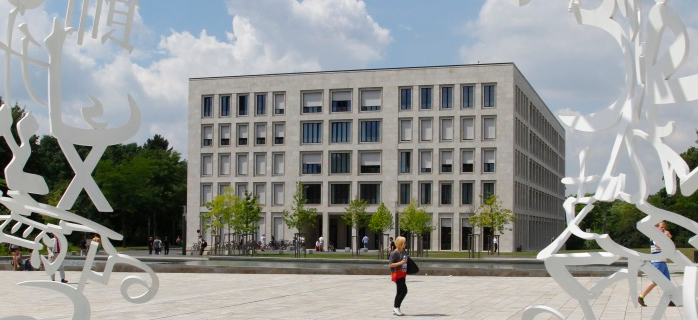
Suche
Anzeige der Dokumente 1-10 von 14
Idiosyncratic Risk, Aggregate Risk, and the Welfare Effects of Social Security
(2017-12-01)
We ask whether a pay-as-you-go financed social security system is welfare improving in an economy with idiosyncratic productivity and aggregate business cycle risk. We show analytically that the whole welfare benefit from ...
A Life-Cycle Model with Ambiguous Survival Beliefs
(2015-10-02)
Based on a cognitive notion of neo-additive capacities reflecting likelihood insensitivity with respect to survival chances, we construct a Choquet Bayesian learning model over the life-cycle that generates a motivational ...
Social Security in an Analytically Tractable Overlapping Generations Model with Aggregate and Idiosyncratic Risk
(2015-04-13)
When markets are incomplete, social security can partially insure against idiosyncratic and aggregate risks. We incorporate both risks into an analytically tractable model with two overlapping generations. We derive the ...
Endogenous Grids in Higher Dimensions: Delaunay Interpolation and Hybrid Methods
(2016-04-18)
This paper investigates extensions of the method of endogenous gridpoints (ENDGM) introduced by Carroll (2006) to higher dimensions with more than one continuous endogenous state variable. We compare three different ...
Aging and Pension Reform: Extending the Retirement Age and Human Capital Formation
(2014-12-29)
Projected demographic changes in industrialized and developing countries vary in extent and timing but will reduce the share of the population in working age everywhere. Conventional wisdom suggests that this will increase ...
On the Optimal Provision of Social Insurance
(2015-08-29)
In this paper we compute the optimal tax and education policy transition in an economy where progressive taxes provide social insurance against idiosyncratic wage risk, but distort the education decision of households. ...
Secular Stagnation? Growth, Asset Returns and Welfare in the Next Decades: First Results
(2016-09-08)
Ongoing demographic change will lead to a relative scarcity of raw labor to the effect that output growth will be decreasing in the next decades, a secular stagnation. As physical capital will be relatively abundant, this ...
The Impact of Biases in Survival Beliefs on Savings Behavior
(2017-03-24)
"On average young people ""undersave"" whereas old people ""oversave"" with respect to the rational expectations model of life-cycle consumption and savings. According to numerous studies on subjective survival beliefs, ...
Cognition, Optimism and the Formation of Age-Dependent Survival Beliefs
(2018-06-02)
This paper investigates the roles psychological biases play in deviations between subjective survival beliefs (SSBs) and objective survival probabilities (OSPs). We model deviations between SSBs and OSPs through age-dependent ...
Optimal Taxes on Capital in the OLG Model with Uninsurable Idiosyncratic Income Risk
(2018-02-09)
We characterize the optimal linear tax on capital in an Overlapping Generations model with two period lived households facing uninsurable idiosyncratic labor income risk. The Ramsey government internalizes the general ...